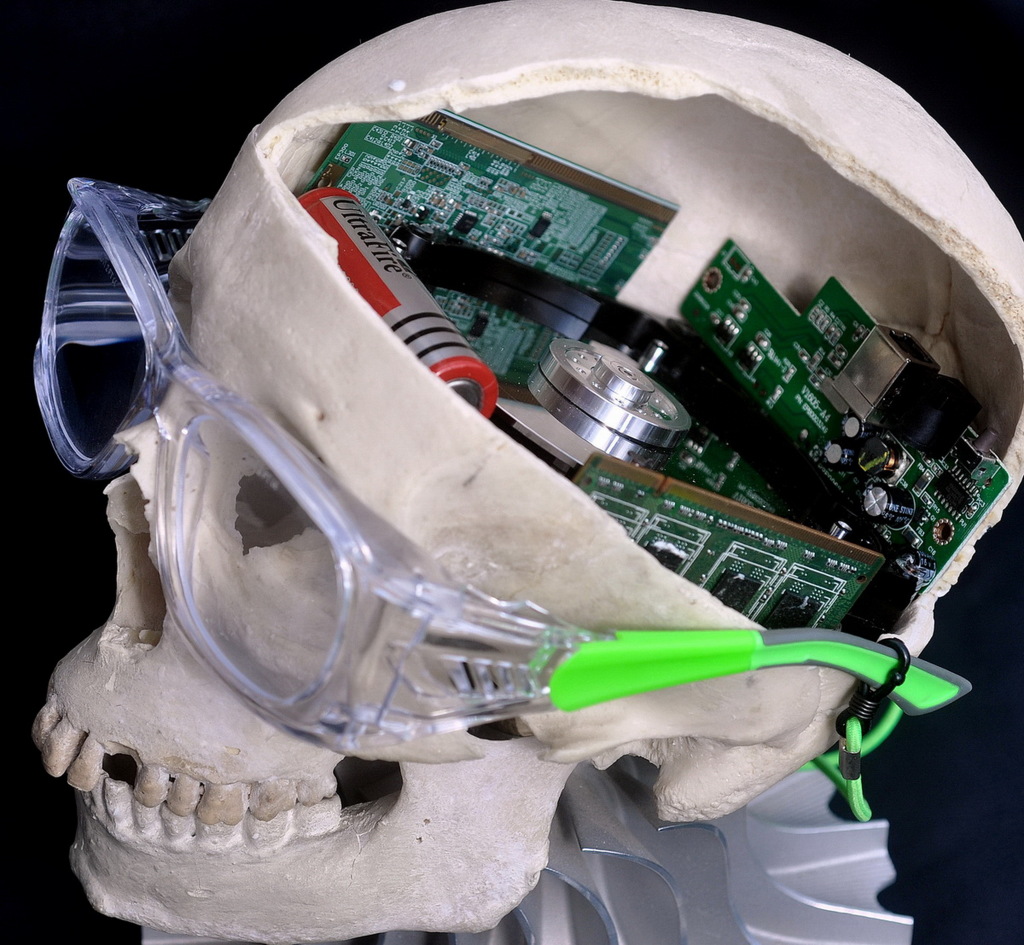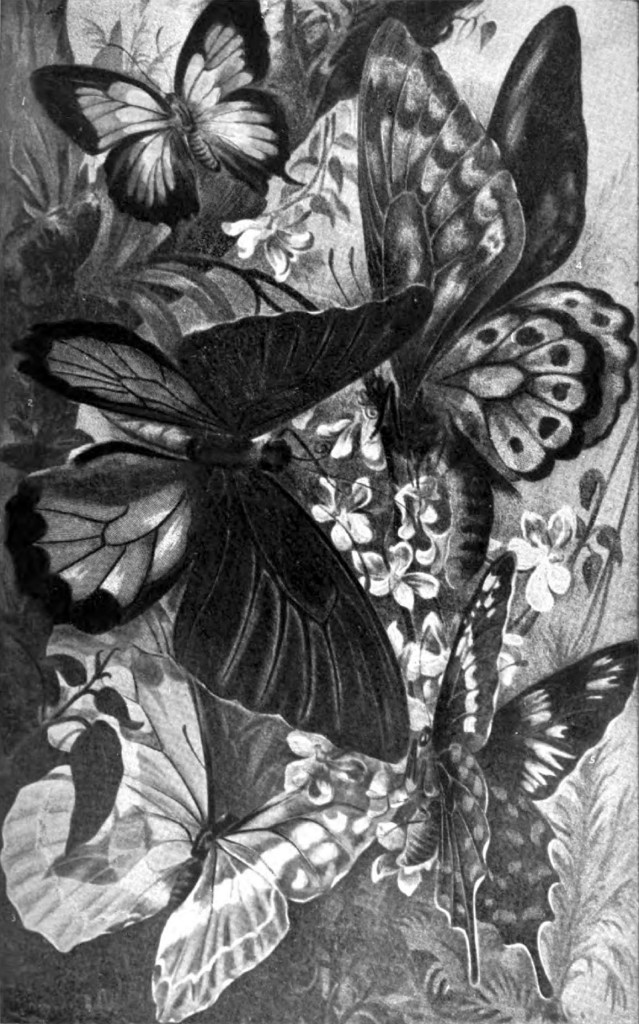Humans have always had a desire to learn about the world around them. They have performed weird science experiments with the intentions of solving some of the most challenging questions. Scientists will perform experiments to test theories, make important discoveries or to demonstrate a known fact. Regardless of the purpose for scientific studies, some are considered to be unethical.
Apes have been observed creating and experimenting with their own tools. For example, they have been seen sharpening a stick to use as a weapon. However, they can make all of the tools they want without dealing with any criticism from other apes. For humans, this is not always the case.
Create a controversial product or set up a bizarre scientific experiment that may even remotely offend people, and you are likely going to get criticized. Whether the science is considered to be just a little bit too strange, controversial or unethical, there will be plenty of criticism from not only the scientific community, but others that believe it should be prohibited. In this post, we will share the weirdest science in history. Experiments conducted by some of the most determined scientists.
Weird Science Experiments
Human And Animal Testicles Implanted Into Prisoners
A chief surgeon at the San Quentin Prison had performed some of the strangest experiments for the strangest purposes. Dr. Leo Stanley had carried out several types of unusual experiments on hundreds of prisoners. He would first remove the testicles out of prisoners shorty after their execution. Then he would surgically implant them into living prisoners. Stanley would eventually take things a big step further by attempting to implant animal testicles into the living prisoners.
The animals would include goats, rams and even boars. Stanley had reasons to why he would perform such bizarre surgeries. He believed that crime was caused by biological causes. Therefore, he believed that by removing and replacing the testicles of prisoners, he could help control crime. However, if this belief was a fact, isn’t he just removing the so-called “biologically unfit” testicles (the executed prisoner) right into another person (the living prisoner) that is already a prisoner?
Stanley would also perform forced sterilizations on the prisoners. He had claimed that he was sterilizing the prisoners to help prevent the “unfit” from reproducing. Of course, many think Stanley’s reasons for his experiments are not only unethical, but also for unsupported purposes.
Bizarre Head Transplants

“Bundesarchiv Bild 183-61478-0004, Kopftransplantation durch Physiologen Demichow” by Das Bundesarchiv is licensed under CC BY-SA 3.0 DE
In May of 1908, an American physiologist by the name of Charles Claude Guthrie became the first person to create a man-made two headed dog. However, in January of 1959, another scientist came up with plan for an even faster head transplant. Vladimir Petrovich Demikhov (July 18, 1916- November 22, 1998) was a Soviet scientist. He was a pioneer well-known for his organ transplants (especially his transplantation of the heads of dogs). To minimize the time that the severed donor head was without oxygen, Demikhov would simply use a “blood-vessel sewing machine.”
On his bizarre journey, Demikhov transplanted a whopping twenty puppy heads. This includes shoulders, lungs and forelimbs. Each had an esophagus that emptied onto the outside of the dog, and then onto fully grown dogs. The scientists waited to see how long the dogs would survive and what their behaviors would be like. Although in one case, a dog head lived 29 days, the majority lived from two to six days. Typically, it was immune reactions that killed the transplant subjects.
On February 24, 1954, Demikhov had performed a second experiment with the transplantation of a one-month-old puppy’s head. This also included a transplantation of forelimbs to the neck of a German shepherd. Early on, a donor’s head had demonstrated its strong desire to drink water or milk. It was also tugging like it was attempting to separate itself from the recipient dog’s body.
Approximately five hours later, the recipient was put to bed. A member of the staff had no idea of was about to come next. The transplanted dog head bit a staff member’s finger and even made it bleed. On February 26, at around 18:00, the mean and confused dog went on to also bite the recipient dog behind its ear. This made the recipient yelp and shake its poor head. Of course, this strange study was definitely a huge inconvenience for all of the the dogs that participated.
Monkey Head Transplant
On March 14, 1970, a highly controversial head transplant of a monkey took place. Inspired by Vladimir Demikhov’s unusual science, a group of scientists from Case Western Reserve University School of Medicine (located in Cleveland, Ohio) set up the operation. It was led by a neurosurgeon by the name of Robert J. White and a professor of neurological surgery. The head of a monkey was transplanted onto another monkey’s body. To some extent, the surgical procedure was a success.
Interestingly, the monkey head was able to smell, taste and even hear its surroundings. To make the operation a success, the surgeons had cauterized the arteries and veins while the head was simultaneously being severed. This was done to prevent decrease in the volume of blood plasma. So how did the brain survive this incredible procedure? Due to the nerves being left intact, the surgeons successfully connected the brain to a blood supply, which had kept it chemically alive.
Similar to the dog transplanted head, the monkey also attempted to bite some of the staff. The monkey had only survived for a short time after the operation. White was not completely satisfied with just one transplant. In 2001, he had successfully transplanted yet another monkey’s head.
Below is a video of the actual footage of the 1970 operation. You can clearly see a conscious head.
Head Transplants With Insects
Insect head transplants are much more common than animal transplants. In fact, the procedure has been going on for nearly 100 years. In 1923, a biologist by the name of Walter Finkler had claimed to successfully transplant insect heads onto bodies. This includes water boatmen, meal worms and common butteries. The heads were severed with sharp scissors. The leaked fluid from the insect recipient had helped cement the new heads into place. After the procedures took place, the biologist said the insects were able to fully function with their new bodies. Interestingly, female heads that were placed on male bodies had still continued their female behavior. Also, a butterfly of one species was placed on the body of another. It still kept the behavior of its own species. Just imagine running into an amazing and bizarre-looking insect with a head that has the behaviors of a female, and a body that functions like a male. How will these two parts make a compromise?
Today, insect head transplants are still taking place. Of course, insects are extremely resilient and have a much easier chance at surviving a head transplant than animals, and especially humans.
Are Human Head Transplants Possible?
Now that scientists have been able to successfully transplant the heads of animals and insects, what about a human head transplant? Although ethical considerations have prevented the attempts of such an experiment, is it even possible? In order for a human head to successfully be transplanted, it is crucial for the neurons to stay alive while the brain is being transplanted. A potential benefit to transplanting a human head is with victims of cancer. If a cancer patient has cancer throughout his or her body but has an intact brain, a transplant could save their life.
What About A Headless Body?
An experiment done in 1996 successfully created 125 headless mice. It was done by eliminating a gene in a developing embryo. However, out of the 125, only 4 of the embryos had survived until their birth. They were born with no mouth or nostrils, and died immediately after their birth.
In 1997, a professor of biology had created headless frog embryos. It was successfully done by manipulation of the genes that are found in frog eggs. Fortunately, this was a beneficial creation that had helped raise the possibility of growing needed organs for human transplantation.
Real Zombie Dogs: The Bizarre 1940’s Russian Experiment
Back in 1940, Russian scientists had released footage of an experiment they performed on severed dog heads. Scientists were able to keep the zombie dog heads alive with the use of an artificial blood circulation system. With their heads separate from their bodies, they survived for several hours. In response to certain sounds, they would wiggle their ears and also lick their mouths.
Chimera (Genetics)
A chimera is a single organism that is made of genetically distinct cells. These cells originated from different zygotes that were once involved in sexual reproduction. An organism may have both male and female organs or two different blood types. They can also have subtle variations in form. In animal chimeras, they are created by merging multiple fertilized eggs. However, this is not the only way a chimera can occur. They can also be created from the process of organ transplantation. For example, a bone marrow transplant could have the potential to change an animal’s blood type.
Chimeras are not considered hybrids. In chimeras, each of their cells are from either of the parent species. In a hybrid species, each cell is derived from not just one, but both of the parent species.
Today, various experiments are done to create chimeras in various species of animals. Many are done for biological research in hopes of creating organs for humans in need of organ transplants. However, the United States as well as Western Europe have very strict regulations and codes of ethics that have prevented further legal research using human cells. But in May of 2008, a serious debate took place in the House of Commons Of the United Kingdom regarding the ethics of creating chimeras by using human stem cells. The decision stated that embryos are allowed to be created in laboratories with the strict stipulation that they must be all destroyed withing the first 14 days.
What Is It Called When Different Cells Emerge From The Same Zygote?
Organisms that have genetically distinct cells but originate from the same zygote, are a mosaic.
Chimeras Seen In Humans
In 1953, a human chimera was reported to be a woman. She had blood that contained two different blood types. This occurred because she had her twin brother’s cells living in her body.
In 1998, a human man (conceived by the process of in-vitro fertilization) was reported to be a real-life chimera. The human male had possessed some partially developed female organs.
Human-Animal Hybrids: Creating Mice With Human Brains

“Angular Gyrus Animation” by BodyParts3D/The Database Center for Life Science is licensed under CC BY-SA 2.1 JP
Although scientists are given strict guidelines to how far they can go with the creation of chimeras, it looks like some are planning on taking things a bit further. In 2003, scientists had successfully fused the cells of humans with rabbit eggs. Interestingly, these were said to be the very first human-animal chimeras to be successfully created. In 2004, scientists successfully created pigs that had human blood circulating throughout their bodies. This seems like pure science fiction.
So you think it all stops here? It sure doesn’t. There are also rumors that an experiment may be done to create mice that possess real human brains. So why such bizarre creations? According to scientists, they believe that if they can create organisms that are more like humans, they can perform better research for testing drugs or even growing spare organs (such as a liver) for transplantation. This can be a positive outcome. So many people are currently depending on a liver transplant to survive. Scientists also claim that by observing how human cells mature and interact in a living creature, it may eventually lead to the discovery of many new medical treatments.
Perhaps, a huge controversial experiment would be to genetically engineer mice to produce human sperm and eggs. By doing in-vitro fertilization, the child would have parents that are mice.
A Big Update On The Implantation Of Human Brain Cells In Mice
We have an update regarding the implantation of human brain cells (from donated human fetuses) in mice. Yes, it has finally happened. A group of researchers from the University of Rochester Medical Center in New York implanted human brain cells in a mouse. They created a “supermouse”!
So Why Perform This Unbelievable Experiment?
The experiment is said to have taken place in hopes of getting a better understanding of various types of human brain diseases (such as multiple sclerosis). The scientists are going to study the diseases in the living mouse. Although the hybrid brains retained the mouse’s own neurons, almost all of the glial cells (the most abundant cell types in the central nervous system) are human.
Does The Mouse Now Have A Human Brain?
According to Rochester’s Steve Goldman, although all of the non-neuronal cells are human, it is still a mouse brain. However, the researchers concluded the supermouse to be much smarter than traditional mice. Hopefully this study will reveal findings that lead to treatments for diseases of the human brain. This is a story that seems like it only belongs in a Hollywood science fiction movie.
Read more about this amazing story on CNET. (update on December 8, 2014)
The Biggest Dose Of LSD Given To An Elephant
The largest does of Lysergic acid diethylamide (LSD) ever given was back in 1962. However, it was not given to a human, it was given to a 14-year-old male elephant. A director named Warren Thomas of the Lincoln Park Zoo located in Oklahoma City, loaded up a gigantic syringe with 297 mg of the drug LSD (over 1,000 times the typical human recreational dose). He had a plan to make a crucial scientific discovery. The purpose of the study was to determine whether the acid would trigger the elephant to become sexually aggressive. However, he made absolutely no discovery. This is because just within five minutes after the powerful dose was taken, the elephant had collapsed to the ground. Nearly two hours later, the poor elephant named Tusko had passed away.
Although it is believed that the actual cause of the elephant’s death was the powerful LSD, others disagree. They speculate that the drugs that the researchers had used to attempt to revive the elephant, were likely the actual cause of his death. However, it may be a combination of both.
Stubbins Ffirth: The Vomit-Drinking Doctor

“Erbrochenes” is licensed under CC BY-SA 3.0
An American trainee doctor by the name of Stubbins Ffirth (1784-1820) was known for his weird investigations regarding the cause of the yellow fever disease. He had a theory the disease was not contagious. He claimed that the drop in winter cases was proof that the disease likely results from the heat and stresses caused by the summer months. Although Ffirth was correct about yellow fever being more widespread in the summer, his actual explanation was later proven to be false.
The correct and long-awaited answer had came a full six decades after he passed away. The actual cause of yellow fever was first discovered by a Cuban scientist named Carlos Finlay. He found that the illness was linked to bites from female mosquitoes, which are the carriers of the disease.
So what did Ffirth do that was so extremely weird? In order to prove his theory that the disease wasn’t contagious, he began to actually perform his experiments directly on himself. He would collect bodily fluids from people infected with yellow fever. He would then bring himself into direct contact with the fluids by making incisions into his arms and then smearing vomit into the open cuts. As if this was not enough to complete his experiment, he then began to pour the vomit directly into his eyeballs. He would even get more disgusting by eventually frying the vomit and inhaling the fumes. After noticing he was not becoming at all sick, he chose to drink it undiluted.
Ffirth should have at least added a little something to help make it taste a little better. Even though he did not get yellow fever from the vomit, he decided to use other fluids to smear on his body. This includes saliva, blood and even urine. Even after using all of the fluids, he still did not contract the disease. He considered his result of not contracting yellow fever as proof for his hypothesis. He couldn’t have been more wrong. This is because it was later proven that his samples had came from patients that were no longer contagious because they were at late-stages of the disease.
Bizarre Study With Direct Inoculations Made From Syphilis Bacteria

Prostitutes were not the only tool that was used to cause the infections. Researchers had also decided to use direct inoculations that were made from the syphilis bacteria. They would actually pour the bacteria directly into the penises of the men. The researchers would also use the participants forearms and slightly abraded faces. Occasionally, they would use spinal punctures.
After the horrible experiment was completed, there were approximately 700 people infected. Sadly, this high number even included orphan children. The study was not only sponsored by the Guatemalan government, but also various health organizations. However, there is nothing healthy with this experiment. Although the study was never allowed nor held in the United States, in 2010, the US had apologized to Guatemala for conducting such a harmful and contradictory study.
The Robot That Fuels Itself With Plant Biomass

A Cyclone engine is a hybrid external combustion engine. It is also a Rankine engine (a model used to predict the performance of steam turbine systems) that is based on the Schoell cycle (an advanced steam technology). This unbelievable vehicle will get its movement from the engine, which is also used to recharge the batteries that run the sensors, arms and supporting devices. This exceptionally unique concept is part of the DARPA military project for the United States.
The robotic vehicle theoretically operates for an unlimited period of time. Of course, the project gave rise to rumors all over the Internet and media. News had spread that the robot would have the capability to not only ingest plant biomass, but also the remains of humans. People feared that the vehicle could eventually start chasing after human flesh when there is no plant biomass available. However, according to Cyclone Power Technologies, the biomass of humans and animals was never intended to be used in the waste heat combustion engine of the robot. Also, they stated that the sensors are equipped with the ability to distinguish foraged materials. However, according to the project overview from RTI, there are other sources on the list, and one of them is chicken fat.

“Coronoid process of Mandible” by Polygon data is from BodyParts3D is licensed under CC BY-SA 2.1 JP
The Conclusion
Do you find any of these weird scientific experiments to be unethical? You may not have heard of any of them. Without a doubt, they were all performed using the minds of curious human beings.
Although there will always be people that want certain experiments to be prohibited, there will still be others that will continue to be fascinated with controversial and weird science. Fascination is what helps keep scientists on their journey towards making some of the most bizarre discoveries.





